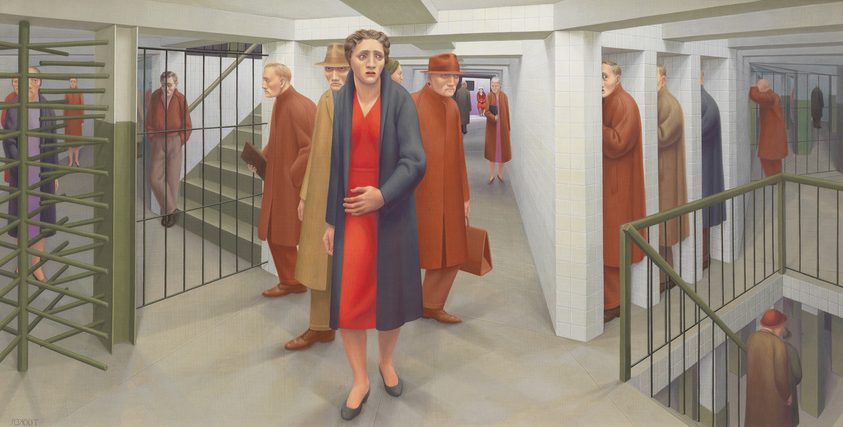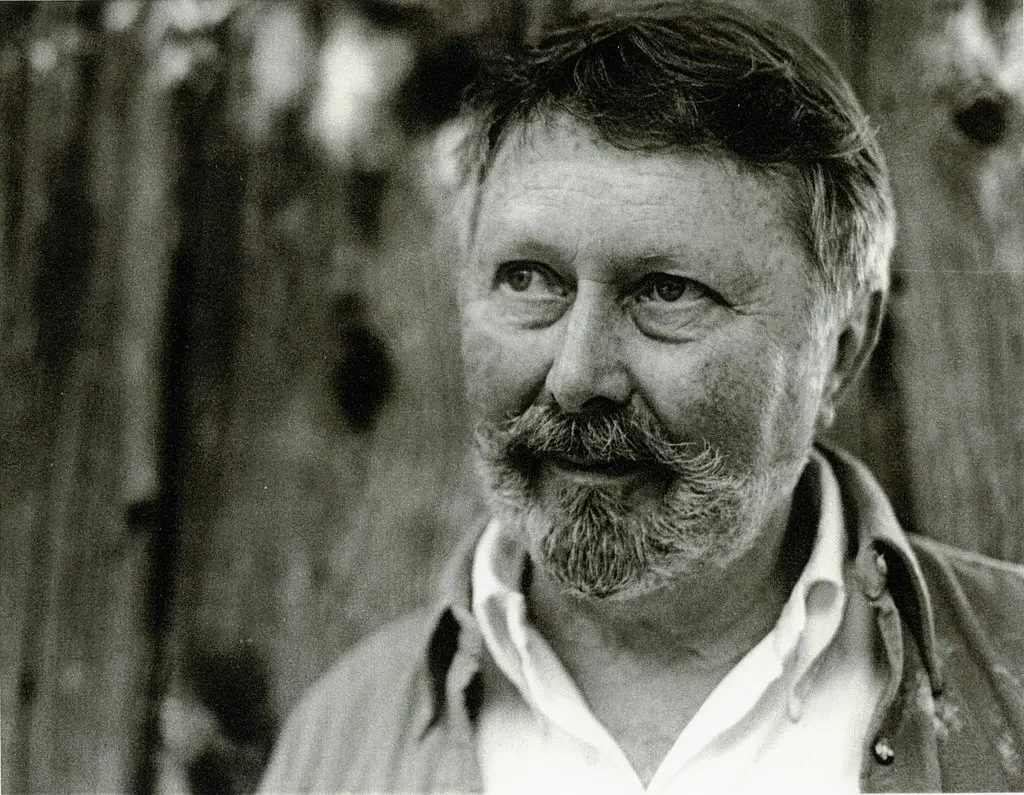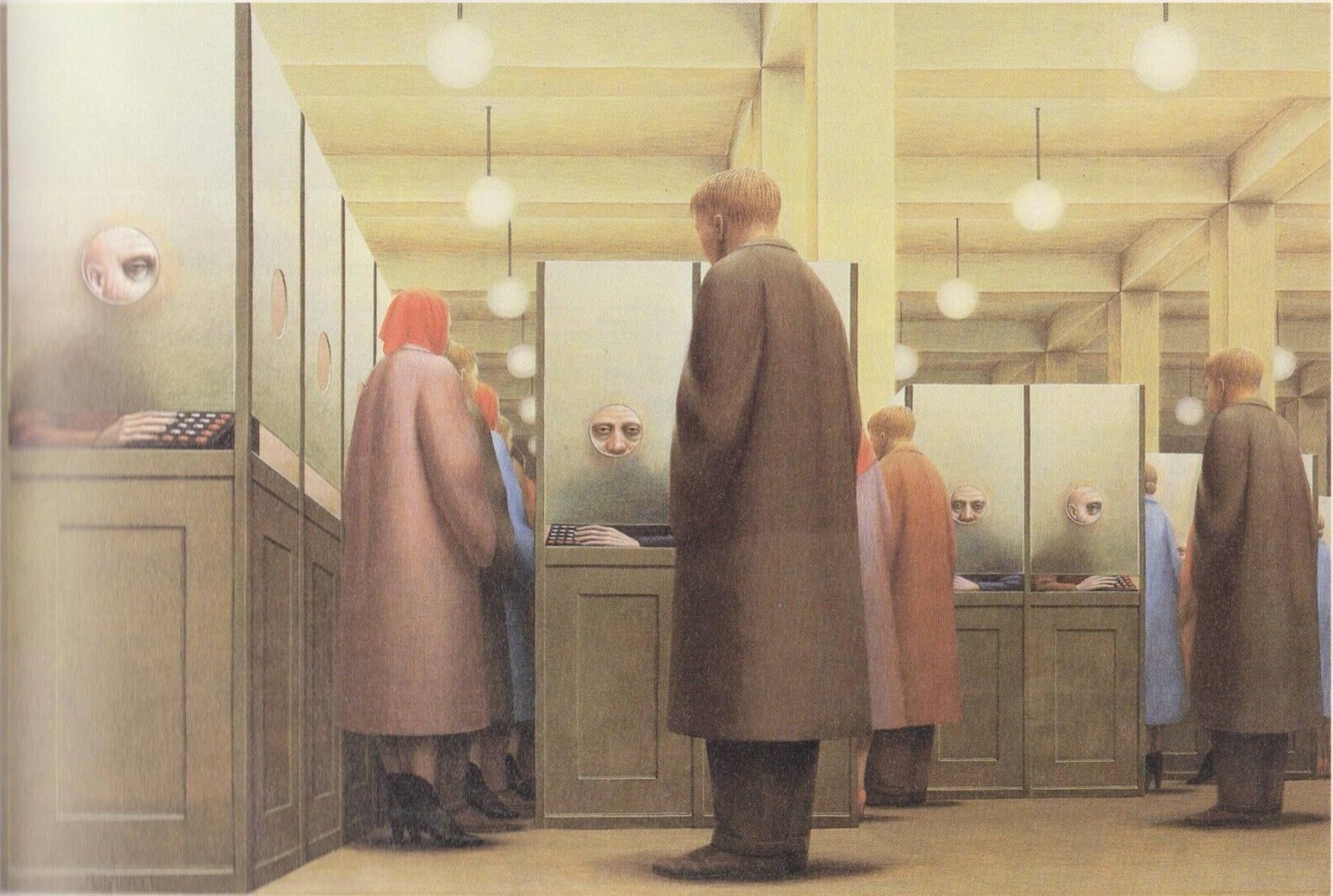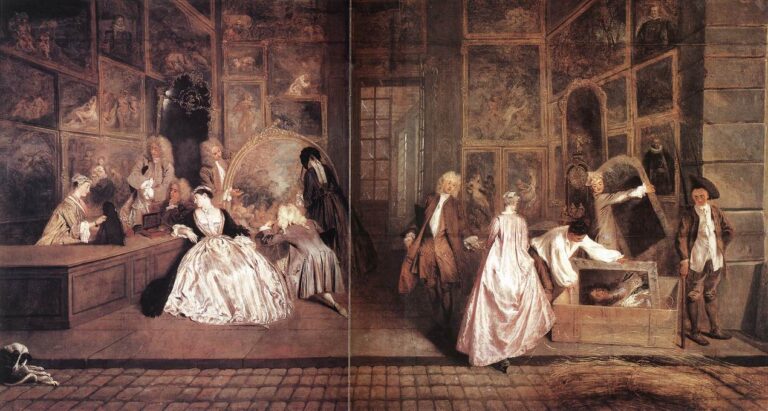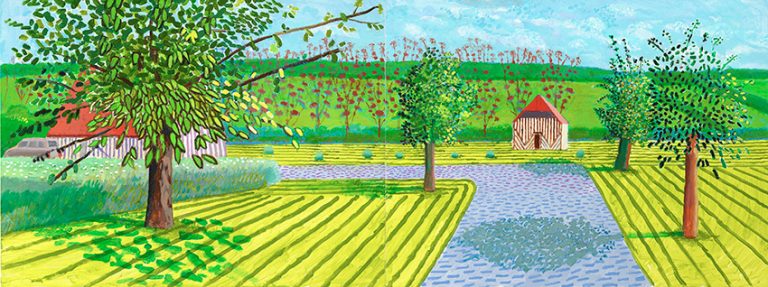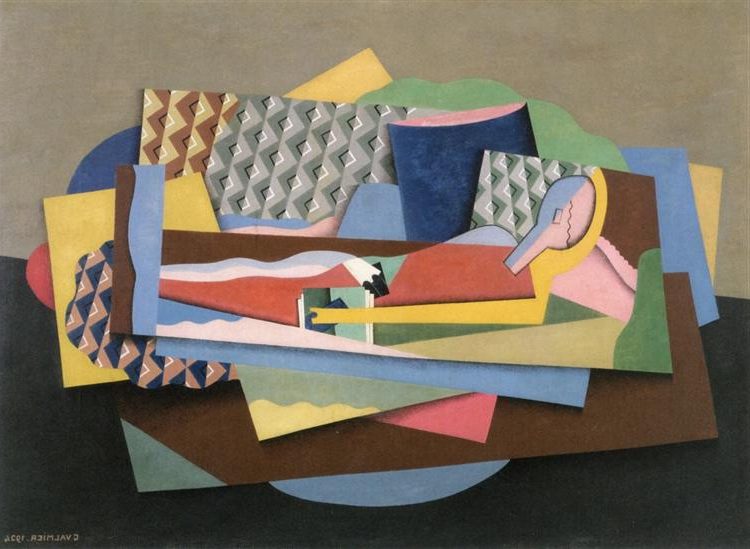George Tooker: Painter of Haunting Social Realism
Born: August 5, 1920, New York City, U.S.
Death: March 27, 2011, Hartland, Vermont, U.S.
Art Movement: Surrealism, Magic realism
Nationality: American
Teachers: Reginald Marsh and Kenneth Hayes Miller
Institution: Harvard University and Art Students League of New York
George Tooker: Painter of Haunting Social Realism
Biographical Overview
George Tooker was an American figurative painter known for his haunting and thought-provoking artworks. He lived from 1920 to 2011, leaving behind a legacy of paintings that explored themes of isolation, alienation, and human connection.
Early Life and Education
George Clair Tooker Jr. was born on August 5, 1920, in Brooklyn, New York. As a child, he showed an early interest in art, taking painting lessons from a local artist on Long Island at age seven.
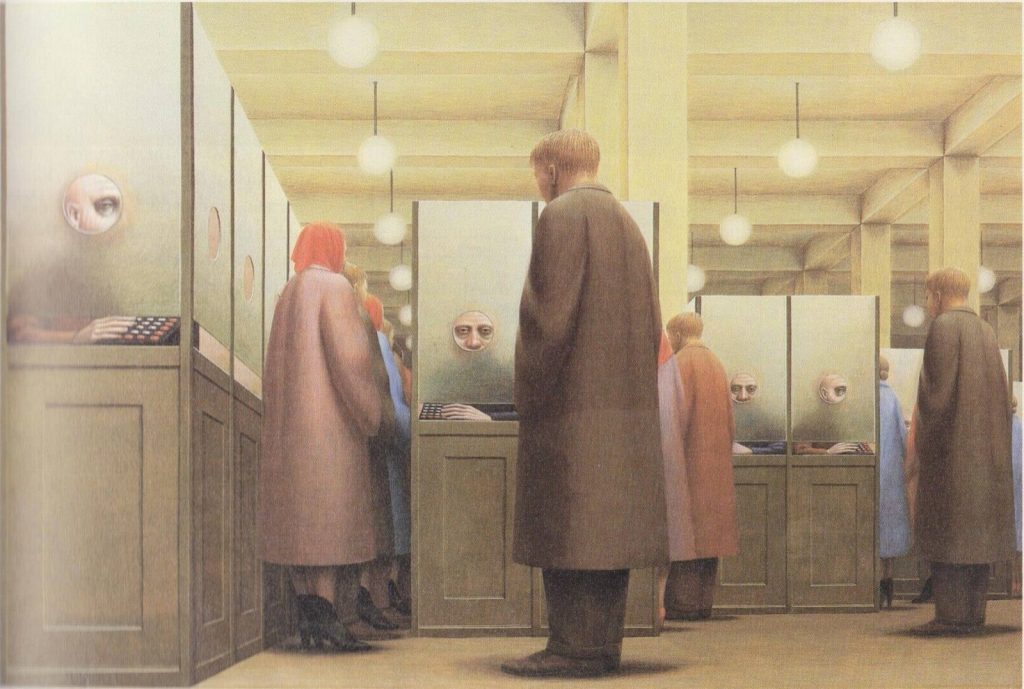
Government Bureau (1956) by George Tooker
Tooker attended Phillips Academy in Andover, Massachusetts for his high school education. After graduating, he enrolled at Harvard University, where he studied English literature. He earned his AB degree from Harvard in 1942.
Following his time at Harvard, Tooker decided to pursue art more seriously. He enrolled at the Art Students League of New York, where he studied under Reginald Marsh and Kenneth Hayes Miller.
Artistic Development and Influences
At the Art Students League, Tooker met fellow artist Paul Cadmus, who became a close friend and important influence on his work. Cadmus introduced Tooker to egg tempera, a painting technique that would become Tooker’s signature medium.
Tooker’s style developed into a unique blend of realism and surrealism. His paintings often featured carefully posed figures in strange, dreamlike settings. He drew inspiration from Renaissance art and contemporary social issues.
His work gained recognition in the 1950s and 1960s. Critics associated Tooker’s paintings with various movements, including Magic Realism, Social Realism, and Surrealism.
Military Service and Personal Life
In 1942, after graduating from Harvard, Tooker joined the U.S. Marine Corps Officer Candidate School. However, his military service was cut short due to illness, leading him to leave the Marines.

Sleepers II (1959) by George Tooker
After his brief stint in the military, Tooker focused on his art career. He split his time between New York City and Hartland, Vermont, where he lived with his partner, William Christopher.
Tooker was known for his private nature and dedication to his craft. He continued painting well into his later years, creating powerful works that addressed social and personal themes. George Tooker passed away on March 27, 2011, in Hartland, Vermont at the age of 90.
Artistic Career
George Tooker developed a unique artistic style that blended realism with symbolic elements. He gained recognition for his haunting paintings that explored themes of isolation and modern life.
Technique and Styles
Tooker worked primarily with egg tempera, an ancient painting technique. This medium allowed him to create smooth, matte surfaces with rich colors. His style combined elements of Magic Realism, Social Realism, and Surrealism.
Tooker’s paintings often featured flat tones and ambiguous perspectives. He depicted figures in eerie, dreamlike settings that seemed both familiar and strange. His work examined the alienation and anonymity of modern society.
Many of Tooker’s paintings showed crowded public spaces like subways or waiting rooms. The figures in these scenes appeared trapped or disconnected from each other.
Significant Works
Some of Tooker’s most famous paintings include “The Subway” (1950) and “Government Bureau” (1956). These works critiqued the dehumanizing effects of bureaucracy and urban life.
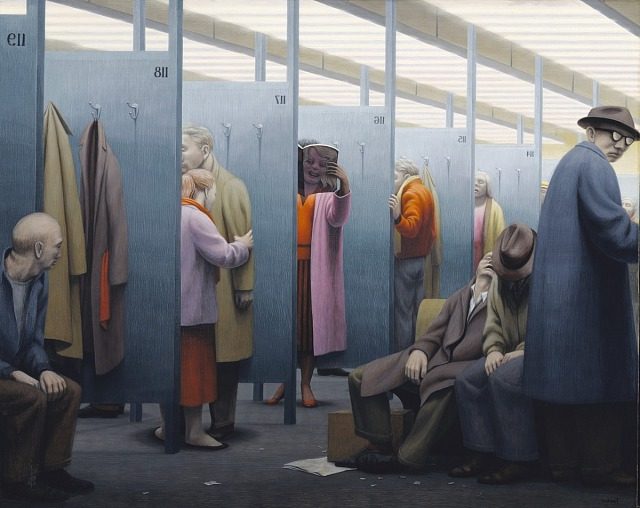
George Tooker’s The Waiting Room (1956–1957)
“The Waiting Room” (1959) depicted rows of isolated figures in a stark interior. It reflected themes of loneliness and detachment that appeared in much of Tooker’s art.
Later in his career, Tooker explored religious subjects. His series “The Seven Sacraments” (1949-1951) showed spiritual rituals in a modern context.
Exhibitions and Accolades
Tooker’s work gained attention in the 1940s and 1950s. He participated in the “Fourteen Americans” show at the Museum of Modern Art in 1946.
The Whitney Museum of American Art held a major retrospective of Tooker’s paintings in 1974. His art is now in the collections of many major museums.
Tooker received numerous honors during his lifetime. He was elected to the National Academy of Design in 1968 and the American Academy of Arts and Letters in 1969.
In 2007, President George W. Bush awarded Tooker the National Medal of Arts. This is the highest honor given to artists by the U.S. government.
Legacy and Influence

In the Summerhouse (1958) by George Tooker
George Tooker’s art left a lasting mark on American culture. His paintings continue to spark discussions about modern life and social issues.
Cultural and Social Impact
Tooker’s work spoke to the alienation of urban society. His paintings like “Subway” and “Supermarket” showed the isolation people felt in crowded spaces. These images resonated with many who experienced similar feelings in big cities like New York.
Tooker’s art also touched on civil rights issues. His “Windows” series depicted racial tensions during the 1960s. Some saw links between his work and events like the Selma to Montgomery marches.
Later in life, Tooker’s Catholic faith influenced his art. He created religious-themed works that explored spiritual ideas. This shift added new depth to his artistic legacy.
Major Exhibitions and Retrospectives
The Whitney Museum of American Art hosted a major Tooker show in 1974. Titled “George Tooker: Paintings, 1947-1973,” it brought his work to a wider audience.
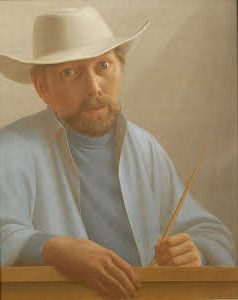

The Museum of Modern Art in New York also featured Tooker’s paintings. His pieces “Waiting Room II” and “Government Bureau” became part of their collection.
In 2008, the DC Moore Gallery put on a big Tooker exhibit. It showed how his style changed over time. The show included famous works like “The Subway” and “Corporate Decision.”
These exhibitions helped cement Tooker’s place in American art history. They showed how his unique vision captured the mood of his times.
Frequently Asked Questions
George Tooker’s art explored themes of isolation, anxiety, and social critique. His unique style blended realism with surreal elements to create haunting images of modern life.
What themes are prevalent in George Tooker’s artworks?
Tooker’s paintings often featured themes of isolation and alienation in urban settings. He depicted crowded spaces filled with lonely figures. His work also explored social issues, bureaucracy, and the human condition.
How does ‘The Subway’ capture the essence of post-war America?
‘The Subway’ shows people trapped in a claustrophobic underground space. The figures avoid eye contact and seem disconnected. This painting reflects the anxiety and isolation many felt in post-war urban America.
What techniques did George Tooker employ in his paintings?
Tooker used egg tempera paint to create smooth, matte surfaces. He favored simple compositions with flat colors and sharp lines. His figures often had blank expressions and stiff poses to create an eerie mood.
Can you describe the symbolism in George Tooker’s ‘The Waiting Room’?
‘The Waiting Room’ shows people sitting in identical cubicles. The repetitive layout suggests a loss of individuality. The figures appear trapped and separated from each other, symbolizing modern alienation.
What social commentary is present in George Tooker’s ‘Government Bureau’?
‘Government Bureau’ critiques bureaucracy and dehumanization. It shows people peering through small windows at faceless clerks. The maze-like setting reflects the confusing nature of government systems.
Which artistic movements influenced George Tooker’s style?
Tooker’s style was influenced by Magic Realism and Social Realism. He combined realistic details with surreal elements. His style also drew from Renaissance art techniques and Early American painting.

